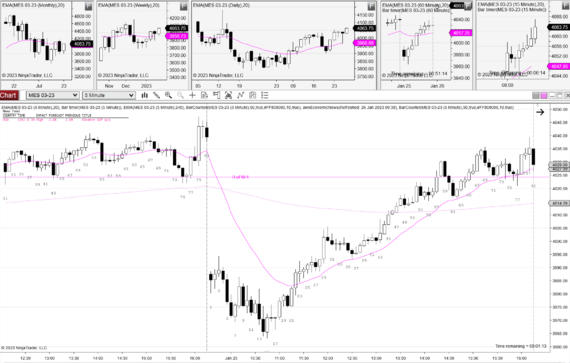分類:H2
Al Brooks call it "H2": Two legged pullback in a bull move, but it can also be a 2nd reversal up from a selloff, so variation of a double bottom. There is one thing that is actually very important to mention, the "A2" term by ninetrans below is a subset of Al Brooks' H2, because Al Brooks look at double bottom a H2 as well, however the fact that they both are called H2 can lead to some confusions to beginner traders, making them think a H2 in a double bottom from a trading range has same probability of success as a H2 in a trend, but in reality, the H2 in a strong trend almost always has higher probability than a H2 in a DB.
Ninetrans call it "A2": A two legged pullback to the EMA in a trend[1]. Most trending days have two or more continuations. Most continuations are A2, which is a 2 legged pullback to the EMA. The simplest way to look at an A2 is the second attempt to end the pullback. As long as any of the bars that make up the pullback are near the EMA giving an entry slightly above or below it, you can consider it an A2, but A2 does work better when the trend is tight and the pattern sets up after 1CB, example: bar 36 on 20230125 on the chart.
Another way to define this is two failed attempts to reverse the trend, i.e. failed L2. Note that if your A2 entry is very far from the EMA, you may get a 3rd push which turns into a W pullback to the EMA. These should be taken just like they were an A2. In a strong trend, you may have H1s and L1s that work, but new traders should just stick to A2[2].
It is relative easy to identify a A2 set up when the market is clearly trending from the open and the price stays well above EMA, i.e. a BLTFO, but when sometime market had a strong reversal attempt from far below EMA (usually after BGD) and then form a A2 around EMA (slightly below, or above, or just oscillating around EMA), it is not a very easy decision because that is where strong bears starts to sell and hope to resume the bear trend (after the BGD).
- ↑ very important, has to be a trend.
- ↑ http://ninetrans.blogspot.com/2011/01/four-trades-off-nine-transitions.html

